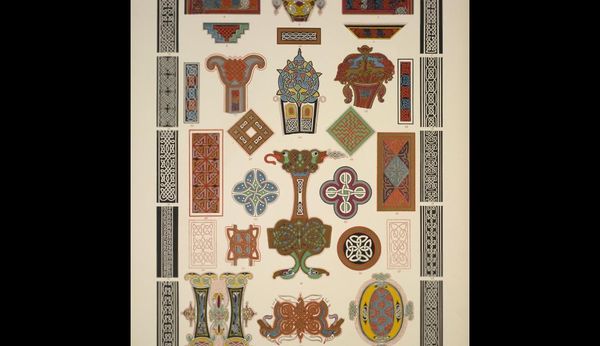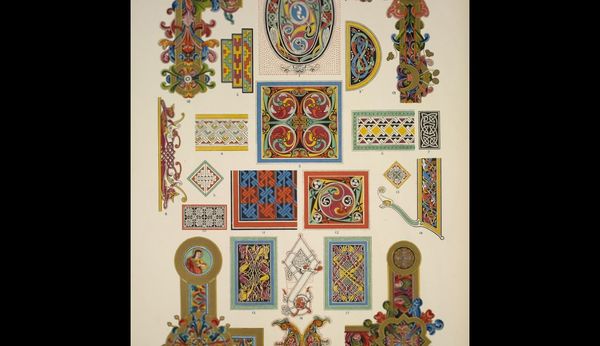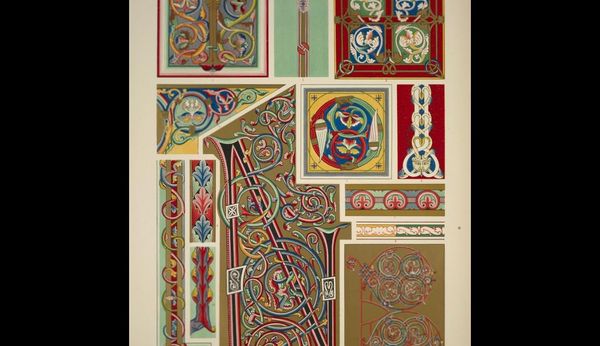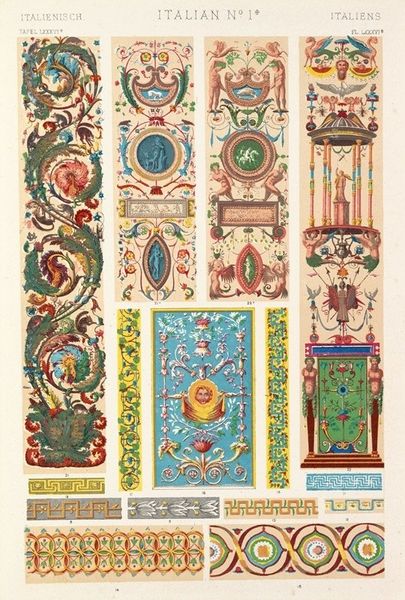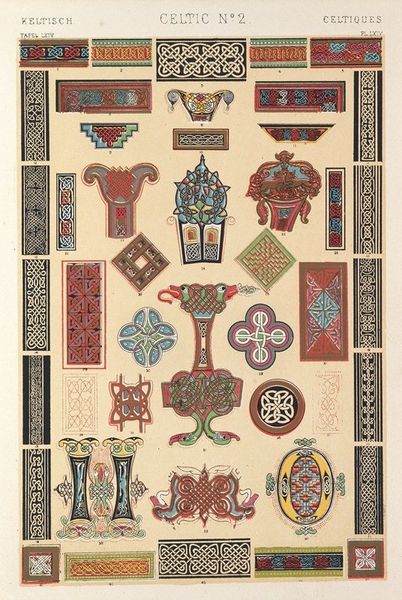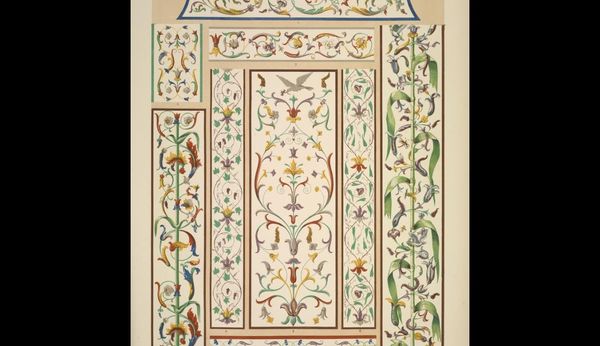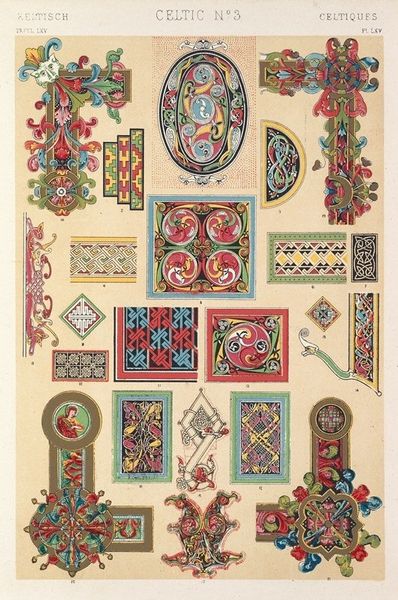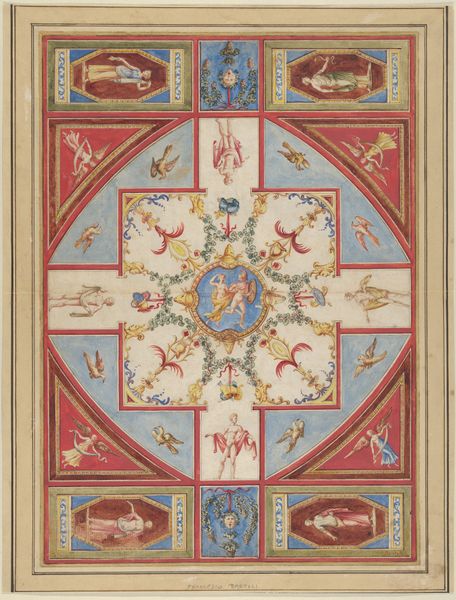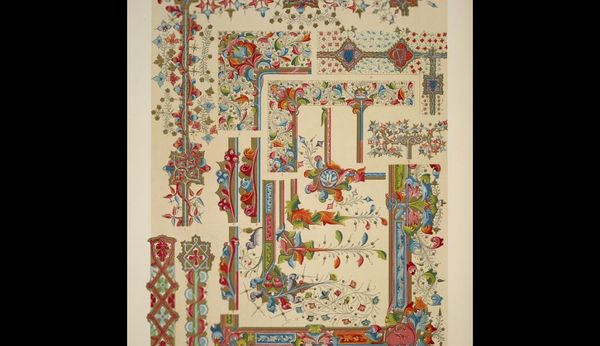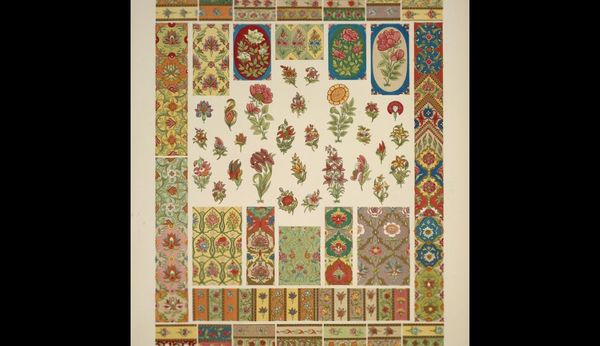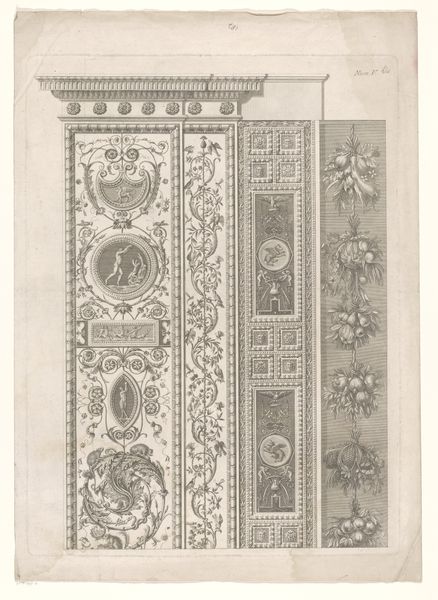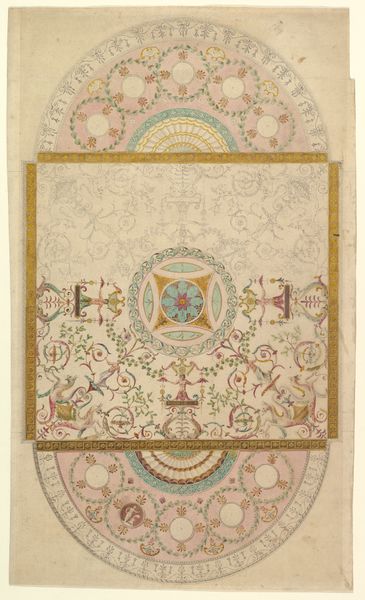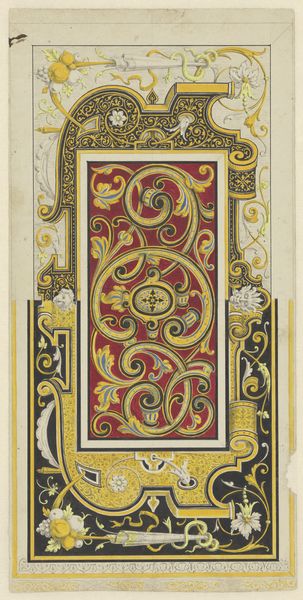
Italian Ornament no. 1. Pilasters and ornaments from the loggie of the Vatican, reduced from the full size paintings at Marlborough House
0:00
0:00
drawing, graphic-art, ornament, textile
#
drawing
#
graphic-art
#
ornament
#
pattern
#
stain glass
#
textile
#
geometric pattern
#
traditional architecture
#
tile art
#
geometric
#
decorative-art
#
italian-renaissance
Copyright: Public domain
Editor: So this is "Italian Ornament no. 1. Pilasters and ornaments from the loggie of the Vatican, reduced from the full size paintings at Marlborough House" by Owen Jones. It looks like a drawing of various patterns and decorative elements. What really strikes me is how each little design seems so contained, yet they create this overall feeling of abundance. What do you see in this piece? Curator: Abundance is a wonderful word for it. For me, it’s a visual echo of the Renaissance's rediscovery of classical forms. Look at how these pilasters and ornaments pull at something primal; we find pleasure and recognition in those forms, because we've seen it a hundred times before. Jones has reduced and redrawn them; he’s taking potent visual symbols out of their architectural context, their 'power place,' and presenting them to us like specimens. What do you think that might mean? Editor: Like taking them out of a temple or palace and putting them in a museum. Is it a way of democratizing art, or is something lost in the translation? Curator: Precisely. On one hand, he's offering access, allowing Victorian England to consume the Italian Renaissance. On the other, severing a symbol from its original environment inevitably changes it. The Griffin, for example – here just a pretty design element, divorced from its original associations of guardianship and strength. Is the echo of meaning enough, or does something vital disappear? Editor: I see what you mean. It’s a bit like reading Shakespeare in translation; you get the story, but the poetry… Curator: Yes! Jones offers the ‘story’ of Renaissance ornament, beautifully rendered, yet stripped of its sacred or civic function. He delivers design without full context; the patterns are readily available, but their intrinsic purpose and original emotional weight are significantly lessened. Editor: That makes me see it differently. It’s both a celebration and a reduction of a powerful visual language. Curator: And perhaps a comment on how easily we can lose depth when we focus solely on surface appearance. An important question for any era.
Comments
No comments
Be the first to comment and join the conversation on the ultimate creative platform.
